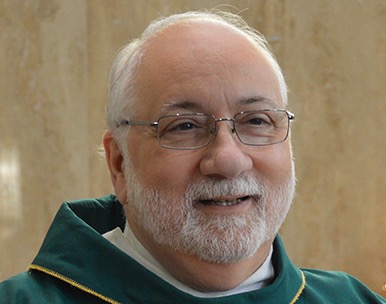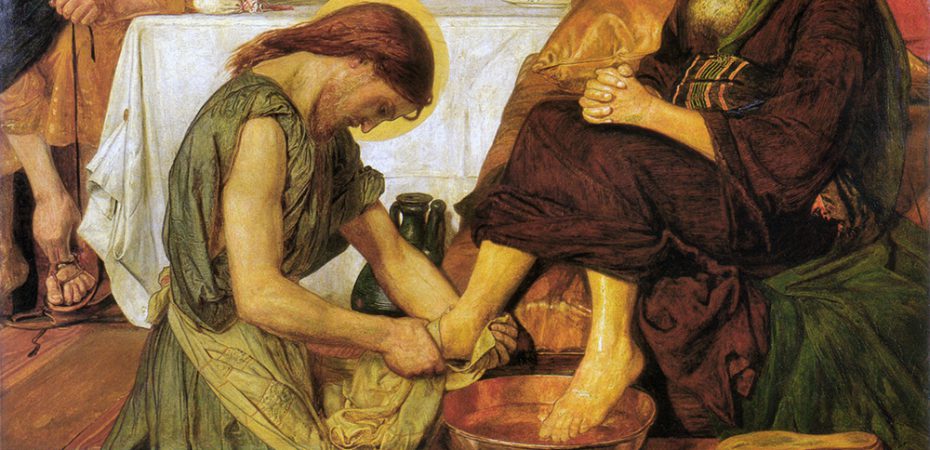Understanding Better the Servant Mysteries
Deacon Dominic Cerrato 1
 I was first introduced to the concept of the Servant Mysteries by Deacon James Keating several years ago in his talks and retreats. It’s one of those theologically loaded phrases that says as much as it hides. Initially, based on the context in which it was used, I immediately grasped its importance to the identity and mission of the diaconate, but it still took me years to unpack. Even still, much remains to be known.
I was first introduced to the concept of the Servant Mysteries by Deacon James Keating several years ago in his talks and retreats. It’s one of those theologically loaded phrases that says as much as it hides. Initially, based on the context in which it was used, I immediately grasped its importance to the identity and mission of the diaconate, but it still took me years to unpack. Even still, much remains to be known.
My interpretation of the Servant Mysteries, at least initially, is the revelation of Christ the Servant in Scripture, Tradition and the magisterium. In these sources, we find the witness of Our Lord to his own servanthood as it relates to his mission and the mission of the Church. Consequently, deacons can find something of their own identity and mission in this revelation. In this respect, I saw these mysteries as static examples, illustrations of a sort, carved in stone to be used as guiding principles for the diaconate. On one level, this made sense because it grounded the diaconate in Christ the Servant. On another level, Christ is hardly static, and so I knew, intuitively, there had to be more.
Understanding the Servant Mysteries within the context of revelation — that is, God’s self-disclosure of who he is and his plan for our salvation — I realized that these mysteries are, at their most fundamental level, a relational reality. They are not merely dispassionate illustrations fixed for all time, but “places” of encounter where, through prayer and meditation, Christ the Servant “comes alive” to the deacon.
These encounters, especially when the deacon makes them an ordinary part of his prayer life, enables him to see that the Servant Mysteries, when intentionally lived, lead to intimate communion with Christ the Servant who is, in himself, the Servant Mystery. Transformed by divine love over time, the deacon becomes a servant mystery, incarnating in his words and actions Christ the Servant. People see in him, despite his faults and imperfections, Jesus Christ who came not “to be served but to serve and to give his life as a ransom for many” (Mk 10:45).
By drawing into his interior life of these Servant Mysteries, the deacon is given a completely new vision to see what he only saw dimly in the past — Christ the Servant permeating and penetrating every single aspect of life. He’s now attentive to the needs of those he’s called to serve and, in serving them with the tenderness of divine love, Christ the Servant is manifested in the moment.
Here, the good and faithful servant meets his Master in those he serves. This now becomes a divine encounter, an encounter between the servant, the ones being served, those who witness the service and, above all, God himself. In this way, the deacon fulfills his unique contribution to the mission of the Church and, in doing so, leads souls to their eternal destiny.
In many respects, the Servant Mysteries, like all mysteries, resist an absolute definition. The best we can do this side of heaven is describe how it works. Nonetheless, what we can say is that, without a growing understanding of the Servant Mysteries, without this ongoing and intimate relationship with Christ the Servant, the deacon will never fully appreciate his identity and mission. In this respect, the Servant Mysteries enable the deacon to become more fully what he is and, by doing so, enliven and embolden the “deacon” in all the baptized, laity and clergy alike.
DEACON DOMINIC CERRATO, Ph.D., is editor of The Deacon and director of diaconal formation for the Diocese of Joliet, Illinois. He is the founder of Diaconal Ministries, where he gives national presentations and retreats to deacons and diaconal candidates. Follow him on Facebook to continue the conversation.






Comments are closed.